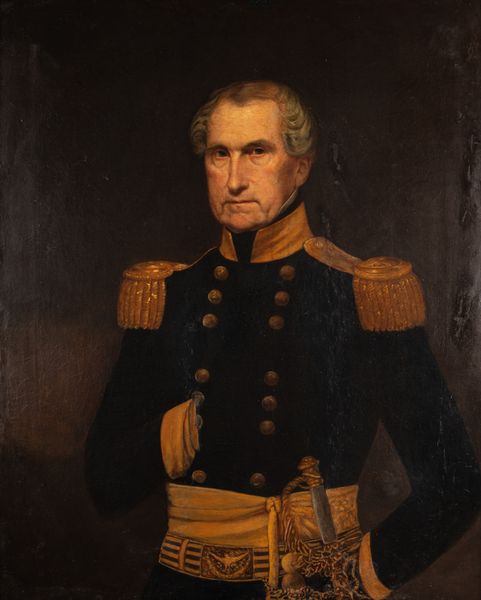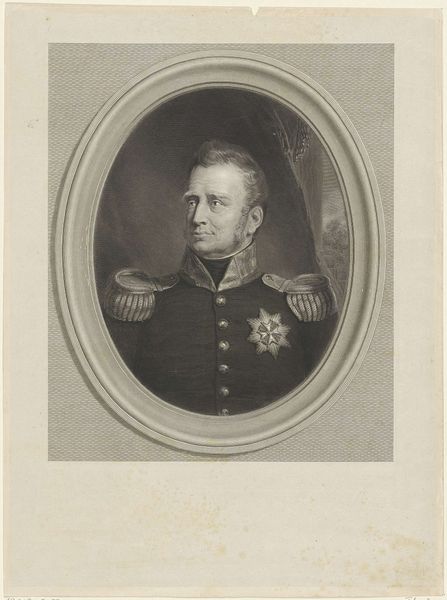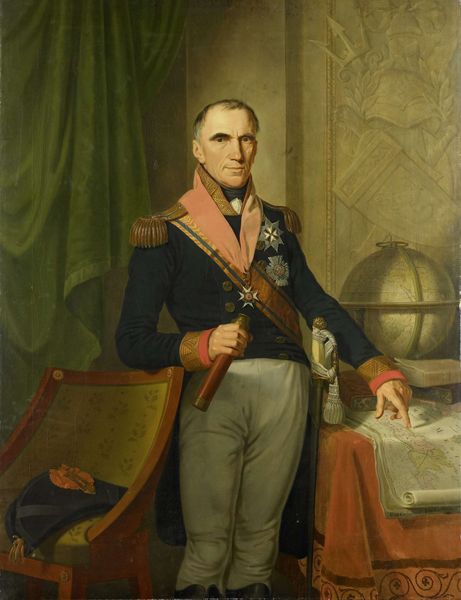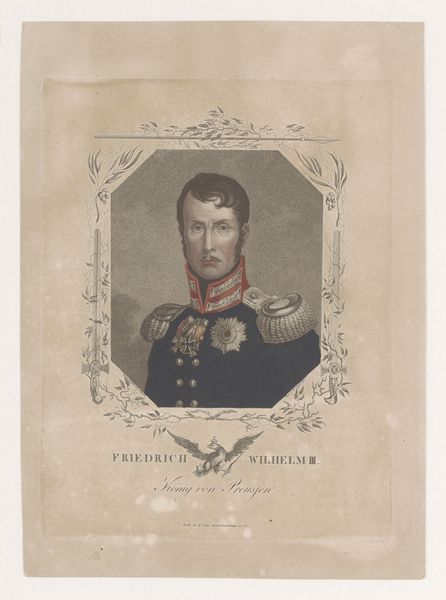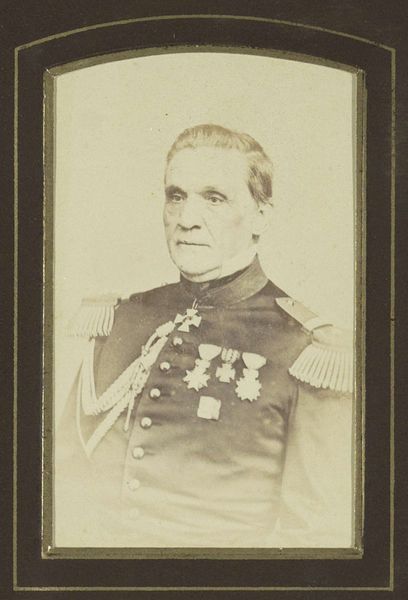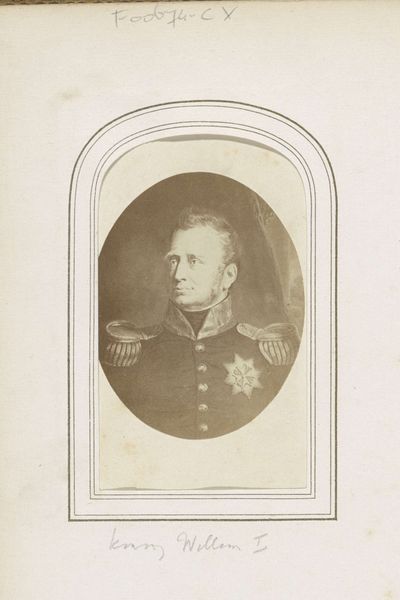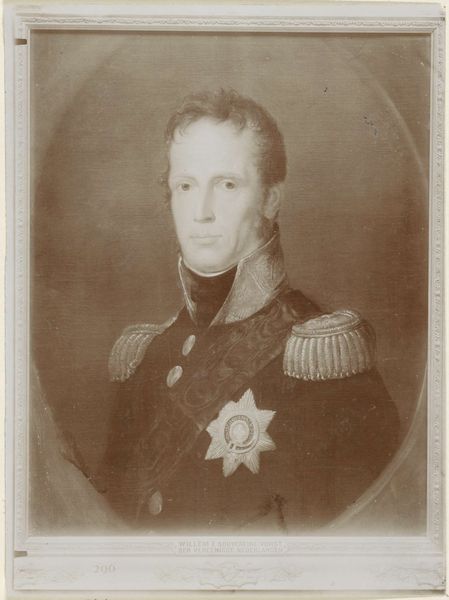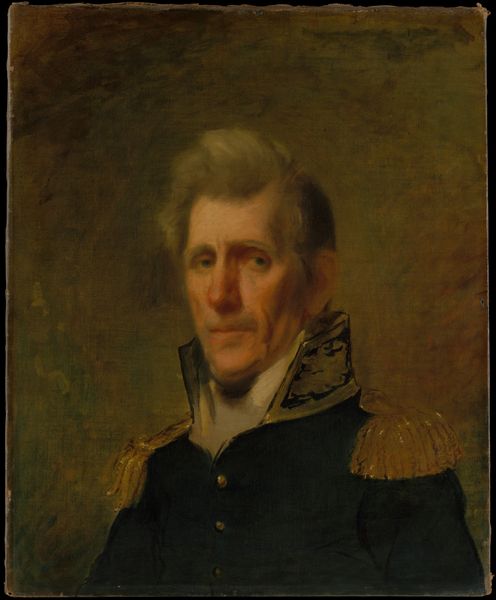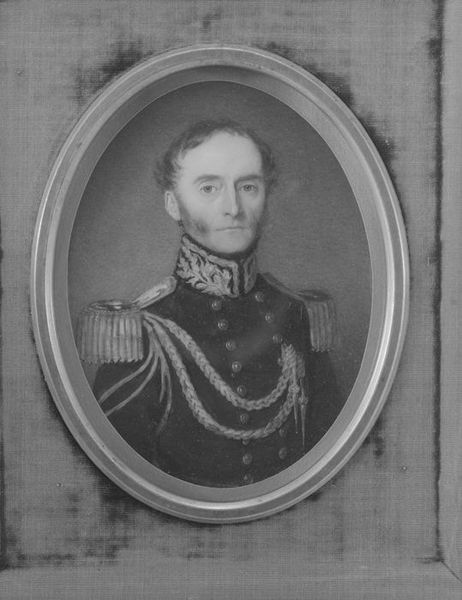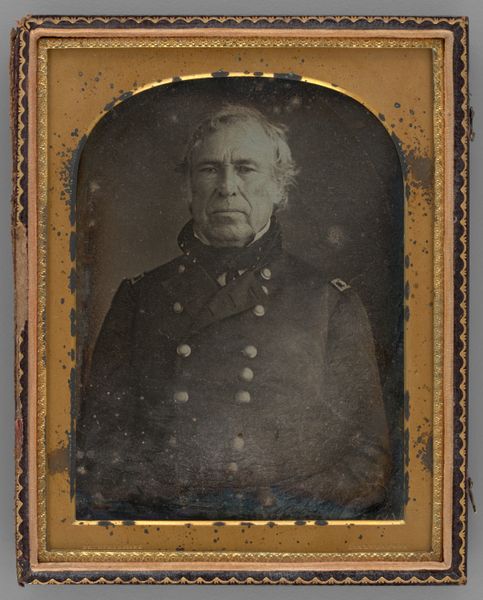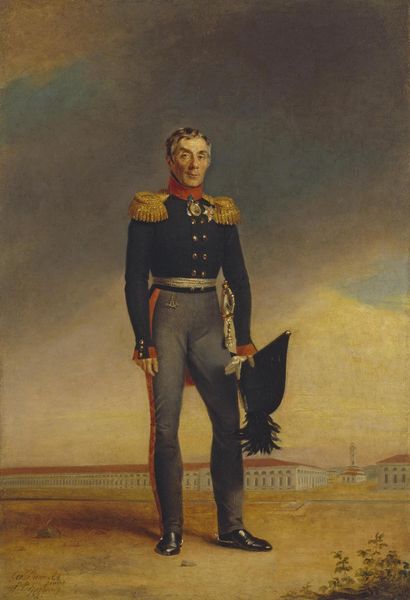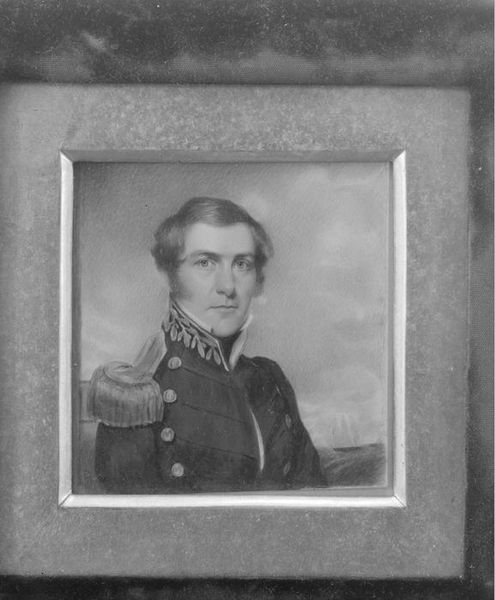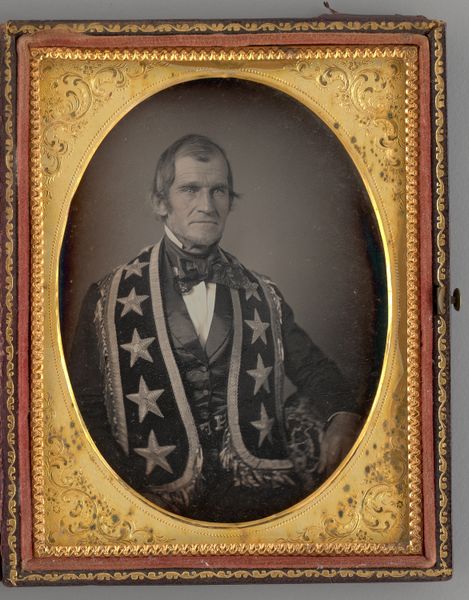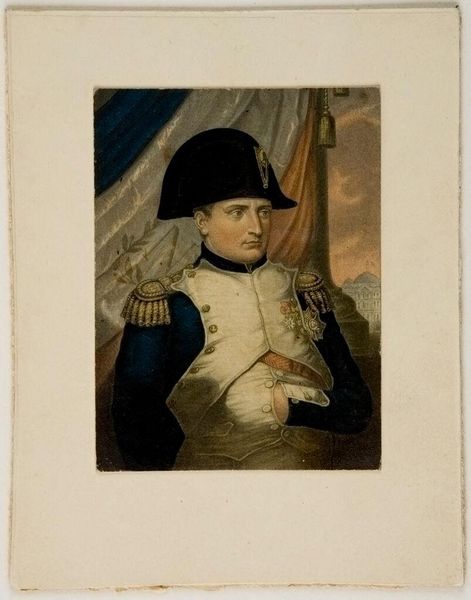
Jonkheer Theodorus Frederik van Capellen (1761-1824), vice-admiraal c. 1800 - 1824
0:00
0:00
oil-paint
#
portrait
#
neoclacissism
#
oil-paint
#
sculpture
#
history-painting
#
academic-art
#
decorative-art
#
decorative art
Dimensions: height 29 cm, width 23.5 cm
Copyright: Rijks Museum: Open Domain
Curator: Let's discuss this oil portrait by Charles Howard Hodges, created sometime between 1800 and 1824, depicting Jonkheer Theodorus Frederik van Capellen, a vice-admiral. Editor: My first impression is one of contained power. The oval format and somewhat muted palette lend a sense of formality, but the gold embellishments suggest a deep, almost opulent significance. Curator: Absolutely. Hodges was known for his mastery of materials, especially his technique of blending oil paints to achieve such lifelike skin tones. His studio would have relied on specific pigment recipes, brushes of different qualities and supports that had to be carefully prepared. Consider too, the market forces at play: naval officers would want to project strength. Editor: Indeed, and the symbols speak volumes about this ambition and achieved rank. That meticulously rendered star surely holds deep symbolic meaning within the Dutch naval context and maybe more broadly related to codes of conduct of honor. Curator: Precisely. These signifiers weren't just ornaments, they are indicators of a social hierarchy materialized through labor. Hodges was astute in his application; note how the texture of his jacket differs markedly from that golden braid. Editor: You are right; this creates a hierarchy within the piece, pointing back to his societal importance. I would like to add the neoclassical setting further reinforces this sense of power and importance. Van Capellen, through symbols and presentation, becomes an embodiment of his era's ideals, all through controlled manufacture, if you like. Curator: In terms of social practice and its status as decorous official painting that fits within specific art-historical parameters, I feel this piece makes its impact as material fact first. Its craftsmanship elevated his station, which may then serve his status later. Editor: An interesting position. And yet, for me, it is the intersection of those constructed materials, labor, plus symbolic weightings of what’s signified that carries such deep weight still. It makes you pause. Curator: It indeed compels one to pause; I now wonder the story that lay behind the sourcing of materials. Editor: Perhaps. It has given me a greater awareness of that interplay of manufacture and meanings behind naval rank within neoclassical painting of the 19th Century. Thank you.
Comments
No comments
Be the first to comment and join the conversation on the ultimate creative platform.
